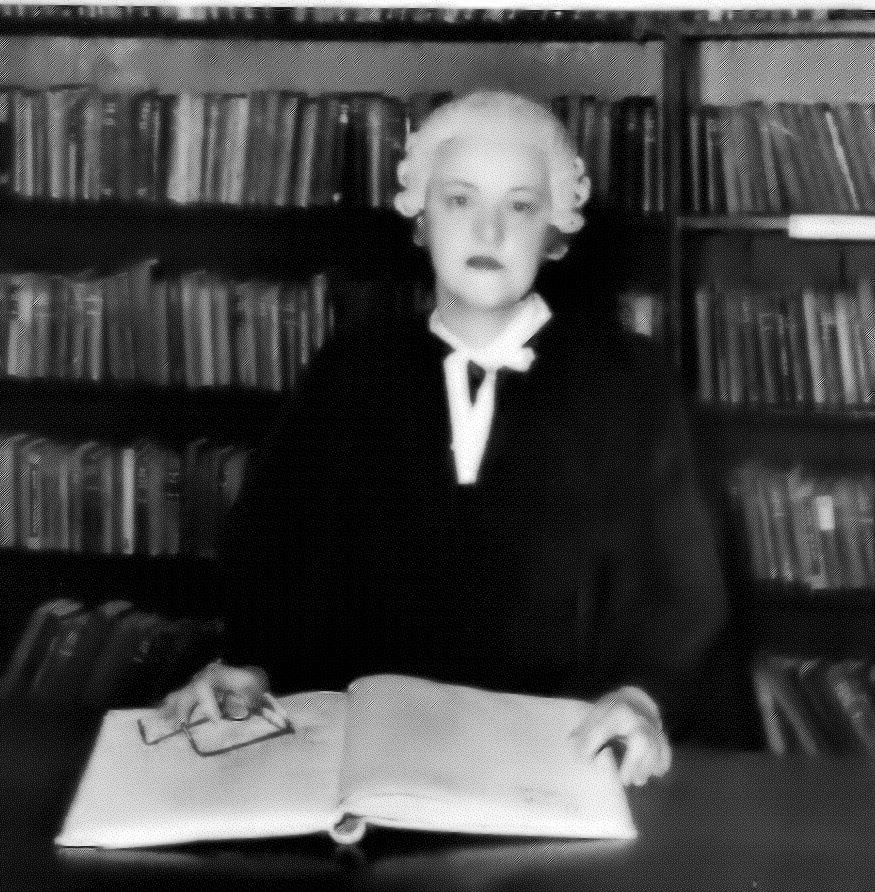'Owing to the almost total neglect of Tinning in the County of Devon, for a series of years previous to my appointment to the office of Vice Warden of the Stannaries in 1784, and the office itself having being vacant for a long space of time, the antient public records and documents relating to the Stannaries have been lost.'
Reports from committees of the House of Commons, July 1800, appendix H.15, p259
'Notice
is hereby given, that a general meeting of the special deputy wardens
of the stanneries of Devon, will be held at the Bedford Arms Inn, in
Tavistock, on Saturday the twenty ninth day of this instant August, at
eleven o'clock in the forenoon, for the purpose of carrying into
execution an act passed in the 38th year of his present Majesty's reign,
intitled "An act for raising a body of miners in the counties of
Cornwall and Devon for the defence of the kingdom during the present
war." By order of the Lord Warden.'
Exeter Flying Post 20 August 1801 p3 col2
Edward Martin of Moretonhampstead appointed Steward of the Stannary Courts of Ashburton, Tavistock, Chagford and Plympton, by the Lord Warden of the Stannaries.
London Gazette Issue 17188 5 November 1816, p1
'The administration of justice, as it relates to the tin mines in Devonshire and Cornwall, is in the hands of the Stannary Courts, which are courts of record in these counties. They are held before the Lord Warden or his substitutes, by virtue of a privilege granted to workers in the tin mines, to sue and be sued only in their own courts, in order that they may not be drawn from their employment by lawsuits in other courts. The peculiar privileges of the tinners, and the laws by which they are governed, are more ancient than the time of Edward 1......they were confirmed however, by a charter of Edward, were fully expounded by a private statute 50 Edward 111, and since explained by a public Act 16 Charles 1 c.25. According to these acts, while the miners are employed in and about the Stannaries, they can be impleaded only in the Stannary Courts, in any matters, except land, life and member....
...Anciently
[the Stannary Courts] were held at Crockern Tor, on Dartmoor....Mr
Polwhele, writing about the year 1795, observes that the president's
chair, the jurors' seats etc. remained entire, cut out of the rude
stone; but that it had been for a long time customary to open the
commission and swear the jury on the site of the ancient court, and then
to adjourn to the courthouse at one of the Stannary towns. Indeed the
custom of even opening the court at Crockern Tor has been for many years
disused, and the seats have been destroyed by the removal of stone for
building materials.
The history of Devonshire, the Rev. Thomas Moore, undated, p530ff
A Topographical Dictionary of England, Samuel Lewis, Vol 2, London, 1833
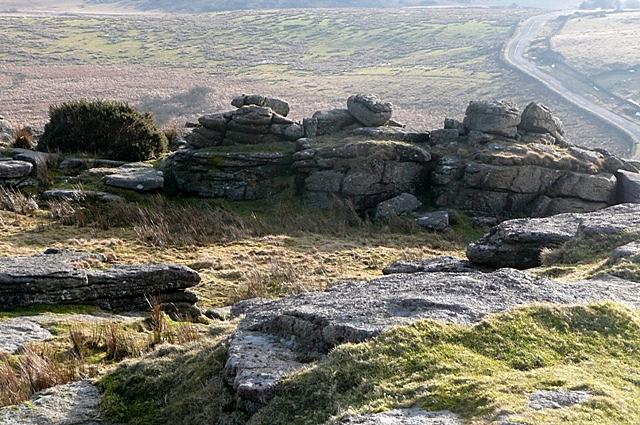
The copyright on this image is owned by Graham Horn and is licensed for reuse under the Creative Commons Attribution-ShareAlike 2.0 license.
History, Gazetteer and Directory of Devon, William White, Sheffield 1878-79, p40
*******
'Early in the year 1800 a Select Committee of the House of Commons was appointed "to enquire into the state of the Public Records of this Kingdom and of such other public instruments, rolls, books and papers as they should think proper and to report to the House the nature and condition thereof..." '
The commission was renewed in various years.
Henry Gervis, as Portreeve of Ashburton, replied to Commissioners: 'Ashburton 19 Dec. 1832. Sir, ...In the archives of this borough I am sorry to say no ancient records or manuscripts exist that can in any manner illustrate general or local history. The only documents we possess are deeds and wills which relate to the public schools and the charities of the town and parish...'
General Report to the King in Council, from the Honourable Board of Commissioners on the Public Records, 1837, pv and 429
Manors, boroughs and parishes
Manors. A
manor was a civil administrative unit. It could be a single piece of
land, or several. It could be part of a parish, or could include more
than one parish. According to http://www.medievalgenealogy.org.uk the
manor was 'the main building block of the feudal system'. The Domesday
Book recorded the details of manors.
A lord ruled over a manor, which consisted of land (including things like woods and ponds) and buildings (including barns and stores). Tenants often rented parts of the manor, paying rent or giving services, and manor court rolls recorded the details. A court baron dealt with the everyday running of the manor, and some manors (Ashburton included) also had a court leet that dealt with disputes and nuisances. The findings of the courts were recorded in a court roll.
The court roll for Ashburton for 2 May 1424, preceeded by a series of enrolled title deeds relating to Ashburton, dating from the 12th century to 1421, is held by Birmingham Archives. It is extremely fragile and cannot be produced for examination.
The same archive holds other material relating to the manor court.
http://discovery.nationalarchives.gov.uk, Galton Papers, Birmingham Archives, ref MS3101/A/F/1/1
http://discovery.nationalarchives.gov.uk, Galton Papers, Birmingham Archives, ref MS3101/A/F/1
Between 1553 and 1555 there was a dispute between Thomas Stukeley and John Forde, gentlemen, and John Wylkockes, keeper of the bishop's palace at Exeter, concerning the detention of court-rolls of the manor of Ashburton. These had been 'demised to complainants with the borough by John, late bishop of Exeter, Devon.'
National Archives C 1/1381/85-87
John Veysey, Bishop of Exeter, had died in 1554. His 'last years as bishop were marked by the enforced surrender of the bulk of his episcopal lands to the Crown.'
http://www.tudorplace.com.ar/Bios/JohnVeysey.htm
The Voices of Morebath, Eamon Duffy, Yale University Press, 2001, p148
Nicholas Orme says that Henry VIII began the 'plunder' in 1545, ordering Bishop Veysey to lease the manors of Crediton and Paignton to courtiers. In 1546-7 Ashburton was amongst other manors leased.
The Church in Devon, 400-1560, Nicholas Orme, Exeter 2013, p176. Reference for the leases of a number of manors: Letters and Papers, Foreign and Domestic, Henry VIII, xx part 1, p282; xx part 2, p444; xxi part 1, p143, 248, 473, 758; xxi part 2, p381.
George Oliver says that the manor was licenced on the order of Edward VI to Francis Poole and others, in the third year of the king's reign (ie 1549). Oliver adds, 'Sir W Pole says "Both the manor and the Borough belonged antiently to the Bishops of Exeter, but now remain to them only the sad remembrance of how much their predecessors had, and how little they have now." '
Ecclesiastical Antiquities of Devon, George Oliver and John Pike Jones, Exeter 1828, p142
John Saintclere has also been linked with leasing the manor from Bishop Veysey - allegedly for 80 years from 1546.
http://www.historyofparliamentonline.org/volume/1509-1558/member/saintclere-john-15067-6871
'John late Bishop of Exeter being in right of his Bishoprick aseized as of fee of and in the manor and borough or town (Ashperton, Devon) in which it was customary to hold a court of view of Frank pledge, and to hold two fairs in the year on the feasts of St Lawrence and S. Martin,and to collect tolls of such as brought certain kinds of merchandize for sale and also seats for stalls, did by Indenture dated 11th August 38 Henry VIII (1546) demise them for eighty years to Johannes Sayntclere Armiger who on 31st May 5 Edward VJ assign them to Mauricius Dennys Mils, who 14th June 7 Edward VI assign them to Johannes Alworth, who 22nd Decr I Maria did assign them to Johannes Forde and he by will made 14th Jany 29th Elizth did devise them inter alia to the plaintiff Thomas Forde.'
Exchequer Pleas, A. 108. 14 James I in 91d. Thomas Ford v Richard Shaptor, quoted by P F S Amery in A Tangle in the History of Ashburton, Transactions of the Devonshire Association, vol 28, 1896, p213
Henry Gervis, above, says: 'The only documents relating to the borough of Ashburton are the court books of the lords of the borough, now extant rather more than one hundred years, in which the proceedings of the annual court leet are entered; these consist of the presentments of the jury, of the officers of the borough of the current year, of alienations of lands in the borough from one person to another, of deaths of free tenants, presentments of nuisances, and other similar presentments.'
op cit p 429
http://www.victoriacountyhistory.ac.uk/explore/themes/government-and-administration/manor - Accessed 7-3-2016
Parliamentary Papers 1780-1849, vol 10, part 2, p188
Right: Halshanger Manor, rebuilt in the 19th century (see below)
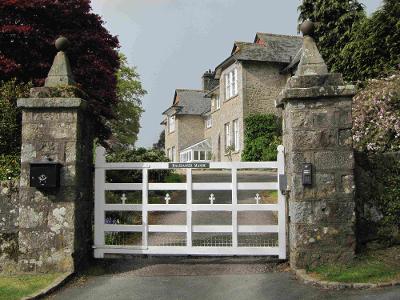
Accounts and papers relating to Parlialmentary representation, Boundary reports, Dec 1831-August 1832, vol 38, p127
*Sometimes known as St Lawrence's Lands. 'Receipts - Rents as before, and xiiid iiiid for lands in Halshanger which belong to the chapel of St Lawrence, and now in the hands of George Ford esquire.' The Parish of Ashburton in the 15th and 16th centuries, as it appears from extracts from the Churchwardens' Accounts, London, 1870, p32Devon Archives and Local Studies Service holds estate papers for the Woodley family of Halshanger, 1695, 19th-20th century
Ref 1164B/2/8,9,6/15,17,7/1-4,17,20,10/4,8,14,28,11/16 http://discovery.nationalarchives.gov.uk/details/r/N13724103 - Accessed 8-05-2017
Ref C1/198/29 http://discovery.nationalarchives.gov.uk/details/r/C7460159 - Accessed 8-05-2017
Alison Hanham, Churchwardens' Accounts of Ashburton, 1479-1580, Devon and Cornwall Record Society, Torquay, 1970, p77
1526-27 'Expenses in riding and labouring for the right and title of the tenements of Halshanger, in dispute.'
ibid p78
1527-28 'Besides the lands and tenements of Halshanger, now in dispute for two years past between the parishioners and John Ford.'
ibid p80
1533-34 '13s 4d received of the warden of Saynt Laurens for anuel rent of Alsangger Barten.'
ibid p91
1540-41 '£5 to William Coke for the final concord made between the said William of the first part and the parishioners of the other, for the right in dowry of his wife, formerly wife of John Downyng, in the lands of Halshanger.'
ibid p108
1548-49 'Allowance of 12d from Buklond, and 6s 8d of the rent of Halshanger.'
ibid p123
***
Ref 74/698/2 http://discovery.nationalarchives.gov.uk/details/r/595a638b-d972-4766-8659-b60c8e66b269 - Accessed 8-05-2017
1813-1816 Ashburton Museum holds the estate plans of Halshanger
Ref 197BK http://discovery.nationalarchives.gov.uk/details/r/N13563307 - Accessed 8-05-2017
1843 A lease in Plymouth and West Devon Record Office concerning mining rights over Halsanger has James Woodley of Halshanger as one of the parties.
Ref 73/115 http://discovery.nationalarchives.gov.uk/details/r/ac5dfa94-de8b-4124-a1fb-e8ee5f2276cb - Accessed 8-05-2017
In 1883 Ilsington Parish Church was undergoing restoration. Memorials of the Woodley family, of Halshanger Manor, dated from 1593.
Exeter and Plymouth Gazette Daily Telegrams, 10 April 1883 p2 col6
'In a field known as Lower New Park, belonging to Halshanger, the hedge at the higher end of the field belongs to Ilsington, whilst the lower portion is in the parish of Ashburton.'
Totnes Weekly Times 2 November 1895 p2 col6
Mrs Woodley, widow of James Woodley, was 80 in 1909. 'When one looks around and sees the new buildings that have been erected, the spacious farm premises above, and this beautiful house in which she resides, built during our late squire's lifetime...'
Mrs Woodley died in 1919.
Totnes Weekly Times 11 September 1909 p2 col1
Western Morning News 7 March 1919 p3 col5
Henry Passmore died in 1921. He had been a clerk of works and had superintended the building of Halshanger House, Ashburton.
Exeter and Plymouth Gazette 30 December 1921 p12 col4
Ralph Woodley Woodley, of Halshanger Manor and Lord of the Manor of Ashburton, died in January 1927. He was buried at Ilsington.
Western Morning News 18 January 1927 p2 col7
***
According to White's, the manor of Ashburton was 'sold in moieties' (ie halves) sometime after the reign of James 1st. At the time of the directory, Lord Clinton and Robert Jardine were lords of the manor.
White's History, Gazetteer and Directory of Devon 1878-79 p105
'When James I created his son, the unfortunate Charles, Duke of Cornwall, he gave him the manor and lands of Ashburton, which is a proof that they, at that time, were in the crown. By a grant of Charles II the same passed to strangers, and Lord Clinton, the writer understands, is now the owner...'
Dartmoor, a Descriptive Poem, with notes by W Burt, N T Carrington, London 1820, p177
'In the reign of Charles II it [Ashburton] belonged to Sir Robert Parkhurst and Lord Sondes, Earl of Feversham...[Sir Robert] sold his moiety to Sir John Stawell, of Parke, in South Bovey, by whose executors it was sold to Roger Tuckfield, Esq., from whom Lord Clinton, the present proprietor of one moiety of the borough, claims. The other moiety was, about the same time, purchased by Richard Duke, Esq., and is now vested in Sir L V Palk, Bart.
A Topographical Dictionary of England, Samuel Lewis, London 1842, p80
The courts were (and are) held in St Lawrence Chapel: 'By deed bearing the 27th December, 38th Elizabeth, Hugh Pomeroy, John Blundell, George Knoll, and John Rewell, granted and confirmed to John Caunter and others of Ashburton, and their heirs, their house or chapel, called St Lawrence's Chapel, and a piece of land adjoining, called the Chapel-yard, and the said John Caunter and others covenanted with the said grantors, to permit the homage of the manor and borough of Ashburton, for the time being (according to an ancient order and custom used in that behalf), to have the use of the said chapel and yard, yearly, at the two law days holden in the said manor and borough during the time of the sitting of the said court...[The chapel] is now in a bad state of repair, notwithstanding which the grammar school is kept in it, and parish and other public meetings, and the courts of the lords of the manor are held in it.'
Report of the Commissioners concerning Charities, containing that part which relates to the County of Devon, vol1, Exeter, 1826, p143
Until 1822 the courts leet of the two lords of the manor were held separately: the stewards of Lord Clinton and Sir L V Palk at that time held the courts on alternate years. But in 1822 the courts leet were joined together.
Evidence given in court in the case of Rex v Woodley, reported in the Western Times
Western Times 2 August 1834 p2 cols4,5
'The manor belongs jointly to Lord Clinton and Sir Lawrence Palk, Bart, through whose united influence the two members have for some years been returned.'
The Panorama of Torquay, Octavian Blewitt, Torquay, 1832, p 180
In 1834 a case, Rex v Woodley, came to court in Exeter resulting from a dispute at the previous year's selection of the court leet jury: James Woodley had to show by what authority he now held the position of bailiff.
The case established that it was the custom in the borough for the bailiff to select a list of freeholders. This list was presented at the court leet, and the Lord of the manor's steward then selected a jury from the list. Amongst other duties the jury appointed the portreeve, the returning officer in elections of Members of Parliament.
In 1833 the steward, not the bailiff, selected the list, and the bailiff, Mr Richard Caunter, objected. Mr Caunter then summoned his own list of freeholders.
The steward of Lord Clinton refused to use Mr Caunter's list, and swore in his own. This jury then elected the new bailiff, James Woodley.
During the course of the case Mr Smith, the steward, refused to hand over documents to the court, saying that they were private documents of Lord Clinton. Lord Denman C J, presiding over the case, said that Mr Smith clearly held some documents in a public capacity as steward, and held others in a private capacity as attorney of Lord Clinton. He ruled that the former documents must be produced.
The verdict was given for the crown, 'nullifying the election of Mr Woodley as bailiff'.
Western Times 10 May 1834 p1 col5
Western Times 2 August 1834 p2 cols4,5
Sherborne Mercury 4 August 1834 p4 col5
See below for a section on the Portreeve.
Boroughs.
People of a town could petition the Crown concerning their ancient
rights and privileges. If the monarch agreed he or she could award the
town a charter* confirming those rights, and the town became a borough
with a degree of autonomy and an entitlement to elect Members of
Parliament. Townsmen (usually called burgesses**) administered the
borough, whilst the lord of the manor usually continued to hold manorial
courts.
* Again, Henry Gervis, above, says 'Ashburton is a borough by prescription, not an incorporated borough.'
I take this to mean (but I may be wrong) that the town had been regarded as a borough for so long that a charter was not necessary to affirm its rights. When debating another borough it was argued that 'Clitheroe is not a borough by prescription for it had its origin within the memory of man'.
op cit, p 429
The Legal Observor or Journal of Jurisprudence, May-October 1844, vol 28, London, 1844, p470
** Ashburton had burgesses, as shown by the 'Chart of the
Burgesses of Ashburton concerning the chantry in the chapel situated in
the court of the Bishop in the same town' in connection with the St Lawrence Chapel. See the St Lawrence Chapel and Grammar School under Ashburton Schools for more details.
http://www.victoriacountyhistory.ac.uk/explore/themes/government-and-administration/boroughs-and-charters -
Accessed 7-3-2016
'The limits [of Ashburton] are at present unknown. No document is in existence from which it can be collected that they ever were accurately defined; nor does any trace remain of a Perambulation.
Resolutions of the House of Commons:
Resolved, 26 February 1707 that the right of election for members to serve Parliament for the Borough of Ashburton, in the County of Devon, is in the freeholders having lands and tenements holden of the said Borough only.
Resolved,
17th March 1710, that the freeholders of the lands and tenements called
Halshanger and Halwell, lands lying within the Borough of Ashburton,
and subject to pay a Borough rent, have a right to vote for Members to
serve Parliament for the said Borough of Ashburton.
....At
the late election, which was the only one contested since 1761, persons
were admitted to vote in right of estates and lands situated in various
parts of the parish and at a distance from the town, whilst the
intermediate properties afforded no qualification.
The
situation of these lands has given rise to an impression that formerly
the Parish and Borough were co-extensive, but no argument can be brought
forward in support of this opinion... we therefore recommend that the
limits of the parish, which are accurately defined, should for the
future form the boundary of the Borough.
Parishes.
A parish was (and is) a unit of Church organization, the boundaries of
which might or might not co-incide with those of towns and villages in
the area. The focal point of every parish was its parish church - and
the focal point of every church was its tower.
Kain, R.J.P., Oliver, R.R., Historic Parishes of England and Wales: an Electronic Map of Boundaries before 1850 with a Gazetteer and Metadata [computer file]. Colchester, Essex: History Data Service, UK Data Archive [distributor], 17 May 2001. SN: 4348
Acknowledgement is made to R.J.P. Kain, R.R Oliver, the Economic and Social Research Council, the History Data Service and the UK Data Archive.
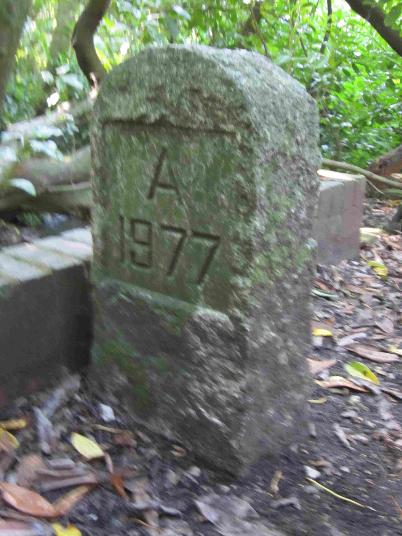
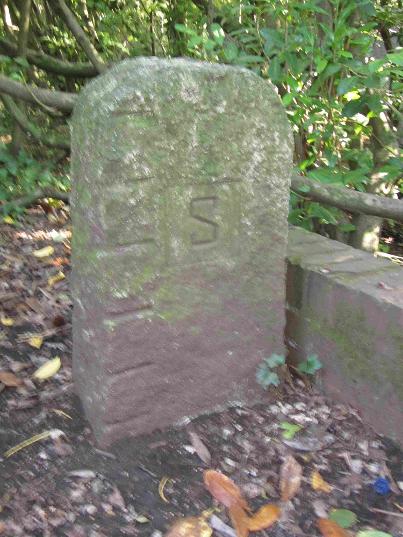
My own photograph circa 2013
At
the end of the 19th century the effects of the late Miss Cockey
included an account of the 'taking of the bounds' of Ashburton in 1613,
which was given to the Portreeve to be put into the town archives.
The party had to go through 3
feet of water under Pridhamsleigh bridge, and they then followed the
river through the Furzleigh estate. The river Dart separates Ashburton
from Buckfastleigh and from Holne, and this river was then followed, and
waded through going under Dart Bridge. Black Rock House and the
quarries were passed on the left, before arriving at Buckfast Mills and
St Mary's Abbey grounds. They arrived at a little island below Hembury
Fort, proceeded to Sandy Gate, and then went under Holne Bridge. The
group then went on the Lovers' Leap (formerly Landscove Torr)
Right: Ashburton/Buckland boundary stone
My own photograph 2017
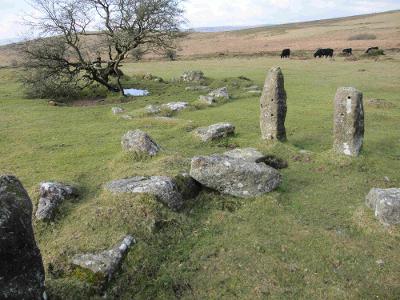
The boundary line continued through the ruins of the threshing floor of Auswell farm, and the party moved from Threshall Stone to Stidwell well, and reached the stone on top of the hill known as Grey Mare. They followed the road to the Beacon, then on to Cold East corner. Then they inspected Willams' Well and Blackslade Ford, and followed the wall to Grey Goose Nest. Lunch was taken in the ruins of Newhouse, which was the limit of the boundary against Widecombe. Rippon Tor was on the right.
My own photograph 2016
Later they proceeded to Lower New Park in Halshanger - the higher end belongs to Ilsington, and the lower to Ashburton. Following the stream from Langaford Bridge, they arrived at Owlacombe and Hook's Cottage. The group then followed the River Lemon to Owls Rattle, and went under Lemon Bridge. The boundaries of Ilsington, Bickington and Ashburton met in a corner of an orchard, and the party went down through the orchard, over a hedge and onto the Newton Road. They then followed the road as far as the smith's shop at Water.
The route then went along the boundaries of Bickington and Torbrian, to Coombe Cross, passing then through fields on Goodstone grounds to the top of Mead Hill Cross. Here there was a stone indicating the division of Ashburton, Torbrian and Woodland. They followed the highway to Great Sanctuary, crossed the road to Higher Barn estate, and then went to the top of Whistley. The final leg of the journey was to Chuley pond and Chuley House.
Totnes Weekly Times 2 November 1895 p2 col5,6
The Portreeve
'Ashburton is .....an ancient borough by prescription, and is governed by a chief magistrate called a portreeve, who is chosen yearly at the courts of the lords of the manor, and is the returning officer at elections for members in parliament.'
A new display of the beauties of England, or a description of the most elegant or magnificant public edifices, royal palaces, noblemen's and gentlemen's seats, Part 2. Anonymous 1776 p368
Amongst the costs and expenses noted by the Churchwardens in 1482-83, and in subsequent years, is a payment of rent to the portreeve: 'Item.....for rent received from the church tenements for the said year - 6½d' By 1578-79 it is recorded 'to the portreve for high rentes 8s'.
Churchwardens' accounts of Ashburton 1479-1580 Alison Hanham, Devon and Cornwall Record Society 1970, p2 and p185.
1830. The portreeve presided over a meeting in the borough, which resulted in a petition being sent to The House of Commons. The petition called for a reduction in taxation, and a revision of the Tithe Laws.
Western Times 18 December 1830 p2 col4
The
portreeve, court leet and court baron continued (and still continue
today), but from 1894 these institutions lost their administrative
power, and became largely social and ceremonial.
In 1902 Kelly's Directory says the following of Ashburton: 'It was not affected by the Municipal Corporations Act of 1835, but continued to be governed by a portreeve and bailiff, elected annually at the court leet held by Lord Clinton as lord of the manor.
Kelly's Directory of Devonshire and Cornwall, 1902 p30
'An air of excitement was generated when in November the court leet assembled. It was a long drawn out procedure, the names of all the householders were called out and a fine of one shilling was imposed on absentees. This was not enforced and was eventually forgotten.
As our house was opposite the (St Lawrence) Chapel we had a good view of all the events like the emerging of the portreeve. I well remember watching the newly appointed dignitaries posing at the top of the steps. In those days you needed a long pocket to hold this office. I remember one particular year in the 1930s when to my mother's horror I could be heard saying 'Come quickly, Mummy, it's the little pock faced man who comes to church'
Many thanks to Hazel Bray for the above
*******
Right and below: Ashburton Museum holds drawings and descriptive text of the portreeve's regalia.
The text reads: 'The chain consists of 55 silver gilt links, each link inscribed with the name of a portreeve of Ashburton with date of office from 1831 to 1932, some links having two dates of office inscribed thereon. These links are alternately spaced between silver gilt links in the form of the letter 'A' the whole held together with the necessary plain links. There are five medallions and one badge of office depicting the Ashburton crest, the latter is detachable from the rest of the chain of office. The chian hangs from the shoulders in a double row of links both back and front.'
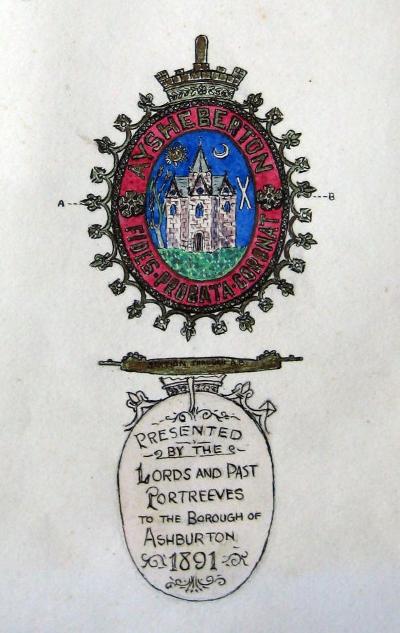
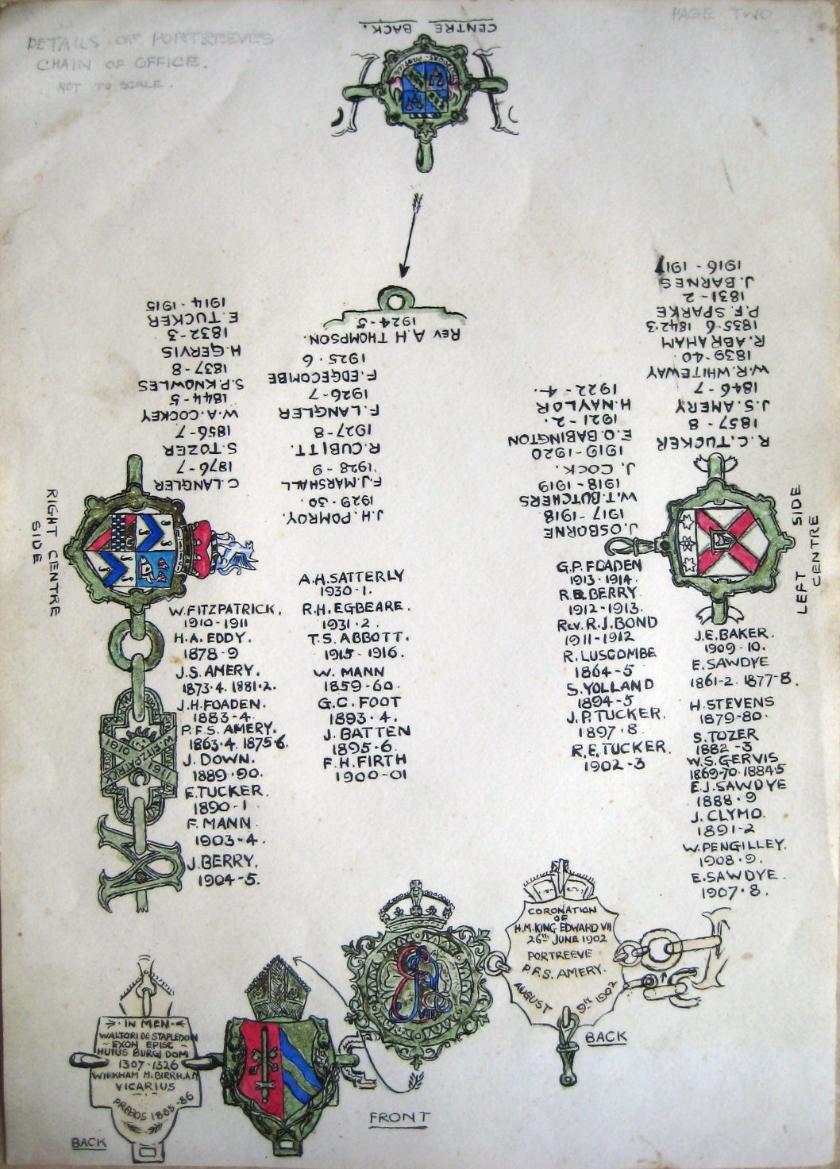
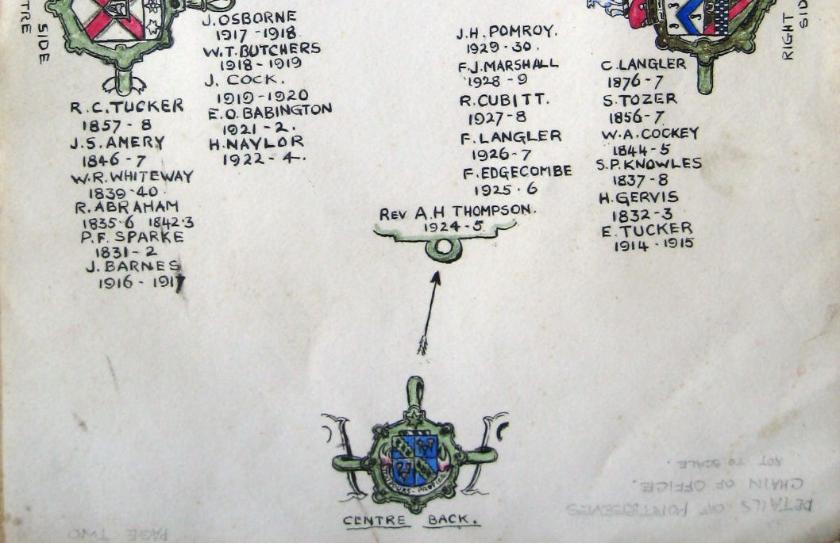
At the end of 1950 Insurance Agent Richard Arscott was inaugurated as Ashburton's 1129th portreeve, succeeding Mr J A Sawdye.
At the court, which was held in the Chapel of St Lawrence, Fred Wills, the town crier, called for all freeholders to attend - Mrs Marjorie Morris, Steward of the Lord of the Borough, then recited over 400 names. 350 freeholders risked being fined the customary 1s for non-attendance.
Other officials of the court, which together formed the leet and baron juries, included:
Bailiff - Robert Garner
Breadweighers - J A Sawdye and R G Robertson
Aletasters - W J Eales and J Shepherd
Viewers of the Markets - R Bonstow and N Stanbury
Viewers of the Watercourses - A Fallows and J Brooking
Pigdrovers - Messrs Bradford and W Cartwright
Scavengers - Messrs F Wills and W Labden
Exeter and Plymouth Gazette ! Dec 1950 p6 cols 6/7
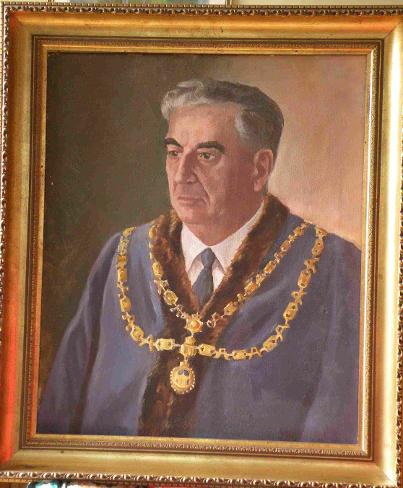
Many thanks to Frances Berry for this picture. To find out more about the painting, see the 1950s section of the Virtual Museum
The Eight Men
'There was.....a certain body corporate, known by the name of the eight men, otherwise the eight men of Ashburton, having several liberties, privileges, pre-eminences, advantages and commodities.....'
Writ issued to the Dean of Exeter Cathedral, 1680s.
'There is not, nor is there had, nor ever was there, nor ever was there had any body corporate known by the name of the eight men.....'
Reply by the Dean
Pleas of the Crown in matters criminal and civil , Tremaine, Rice and Vickers, Dublin, 1793, p 469 For more on this see below.
'(Churchwardens) are accountable to the Rector, Vicar, new Churchwardens and Parishioners, for what Goods and Money etc. they have received for the Use of the Church; and this must be done at the End of the Year........But by a particular custom they may give up their Accounts to Twenty-four of the chief Men.....'
Parish Law, Joseph Shaw, printed by Henry Lintot, 1755, p90
The number twenty four turns up in the Churchwardens' Accounts for Ashburton in 'certayne agreamentes' of 1570, which state that the annual accounts shall be made in the vestry by the Eight Men but with the help of twenty four others, twelve of whom shall be from the Borough, and twelve from the 'Manner'.
Churchwardens' accounts of Ashburton 1479-1580 Alison Hanham, Devon and Cornwall Record Society 1970, p193
In 1537-38 £6 was delivered by the churchwardens to the Eight Men, together with 26s 8d from the store of Saint Mary Magdalene.
Churchwardens' accounts of Ashburton 1479-1580 Alison Hanham, Devon and Cornwall Record Society 1970, p103
Eamon Duffy says that the custom of having a small number of senior parishioners was 'common in the West Country.' He is writing about Morebath in Devon, where the number varied between three and five.
The Voices of Morebath, Eamon Duffy, Yale University Press, New Haven and London, 2003, pp30,31.
The website www.britishfarthings.com says that cities and boroughs often issued 'town-pieces' or tokens. Ashburton was amongst the towns in Devon to coin and circulate such pieces, but it is the Moretonhampstead halfpennies that are particularly relevant here. Moretonhampstead issued two dated 1670, both bearing the words 'For ye benefit of ye poore'. In addition to this, one of them has 'Ye 8 men & Feeffees of Moreton.'
http://www.britishfarthings.com/Tokens/17th-Century/Devonshire/Devonshire.html Accessed 4-1-2014
Documents exist from the parish of Anthony in Cornwall from 1669/70, which deal with the 'chusing' of eight men or governors, and deals with their jurisdiction over buildings, church seats, rates, maintenance, choice of churchwardens etc.
When John Baron senior, a yeoman of Egloskerry, died in the 1600s, his will of 1623 left £10 for the benefit of the poor. The 'eight sidesmen of the parish' were instructed to buy wool and spin it and then return it to the Eight Men.
Ruanlanihorne Parish Church registers list the men selected to be the eight men of the parish in November 1702
National Archives E 134/21Chas2/Trin1
http://discovery.nationalarchives.gov.uk - Accessed 26-1-2014
Documents in the Cornwall Record Office, AM/176/1,2 1623
Documents in the Cornwall Record Office, P 199/1/2 1685-1812
Devon Record Office holds various items connected to the Eight Men of Broadclyst, including an Act Book containing minutes of meetings, and accounts of building materials.
Eight Men also appear in Kenn.
Document in the Devon Record Office, 1310F/A 16 1605 - 1609
Document in the Devon Record Office, 1286M/APF 1 1668
Four men, and later eight men, feature in accounts from Winsford in Somerset.
Somerset Archive and Record Service D\P\wins/4/1/1 1556-1599; 1556, 1573-1599
But the Eight Men existed outside the south-western counties: Lancashire Record Office has a document showing Henry Gregson appointed as one of the Eight Men for the Lower End of Preston parish.
Lancashire Record Office DDA 113 23 Jan. 1743/4
National Archives, Chancery collection. C 1/634/37
In 1735 Edward Gould left the substantial amount of £200 in trust to augment 'the maintenance of the schoolmaster of the free-school of Ashburton', but the people in charge of this trust are the minister, the churchwardens and the sidesmen of the parish. There appears to be no mention of the eight men as such.
Report to the Charity Commissioners, HMSO 1908, p11
A note on the back cover of Ashburton register of baptisms vol X 1796-1812 gives an account of the appointment of 8 sidesmen at the counting tomb in the churchyard at evening service, to be sworn to that office on the following court day. "On 13 May 1804 Rev John Lane Kitson Vicar proffered (?) 8 persons for the affirmation of the parishioners."
Transcription by Mr and Mrs Hatch. Thanks to Jeremy Hatch for this document.
In 1793 a book was published containing legal cases collected by Sir John Tremaine, John Rice and Thomas Vickers, entitled 'Pleas of the Crown in matters criminal and civil.'
One of these cases concerns a John Yolland during the reign of Charles II (1660–1685). He had been elected 'into the place and office of one of the eight men of the parish of Ashburton', but the dean of the cathedral church of St Peter in Exeter had not 'admitted the said John Yolland into the place and office.....nor have administered to the said John Yolland, according to the duty of your office, the oath in the parish of Ashburton in the county of Exeter.'
A writ was issued to try and force the dean, Richard Annesley, saying that John had 'great damage and grievance' and 'manifest injury of his estate'.
The dean agreed that there was an 'ancient and laudable custom of choosing the said eight men in the parish of Ashburton' and that 'upon the death or deaths of one or more of the said eight men some other person or persons......have been used and accustomed to be chosen.'
But, he argued, this choosing happened on the first Sunday after the 6th May, and not at any other time; and the person elected was presented to the dean or his surrogate at the next visitation. John Yolland's predecessor, William Friend, died on the 1st May 1681. The first Sunday after the 6th May was the 8th May, and John was not elected on that date. This was the reason he had refused to admit him.
Pleas of the Crown in matters criminal and civil , Tremaine, Rice and Vickers, Dublin, 1793, p 467-469

Above: During what I have called 'The Pew Wars' of the 1760s and 1770s, the Eight Men are still evident. In a letter to Richard Harris, Attorney at Law, Thomas Furlong says the following:
The next year a meeting of the Parish Council (Called Rural District Council by the same paper in June) included the following officers:
Rev W M Birch
W T S Smerdon
J P Tucker
J Endacott
T W Mann
F White
G C Foot
J Honywill
J F Baker
W Irish
J Lamason
Footpaths were discussed, and a list of the Fire Brigade's appliances was received from Capt. Tucker.
It was reported that there was 'great disatisfaction' amongst the ratepayers over the Clerk's salary.
Western Times 17 May 1895 p6 col4
In 1896 The Rev W M Birch presided over the last meeting of the old Parish Council
Western Times 17 April 1896 p6 col3
In 1896 the new councillors were elected:
Successful were:
G C Foot, land agent
J F Baker, accountant
F W Yates, gentleman
W T S Smerdon, gentleman
J Cock, mine agent
P F S Amery, gentleman
Rev W M Birch, vicar
J P Tucker. merchant
F White, china dealer
J Lamason, brush manufacturer
T Lambshead, farmer
W Irish, gentleman
G Andrews, shoemaker
J H Mitchelmore, foreman tailor
J Cock, jnr., farmer
Unsuccessful were:
J Endacott, builder
W E Jennings, painter
J Honywill, labourer
J H Pomroy, builder
Western Times 1 April 1896 p3 col2
By 1900, the Western Times is calling Ashburton an Urban District Council
Western Times 9 July 1900 p4 col7
The 1902 Kelly's Directory says the following: "Since 1898......... the government of the town has been entrusted, under the Local Government Act 1894, to an Urban District Council of 12 members, formed 15th April that year.
Kelly's Directory of Devonshire and Cornwall, 1902 p30
In 1906 The Ashburton, Buckfastleigh, Brent and Ivybridge Almanack also refers to Ashburton as an Urban District Council
*******
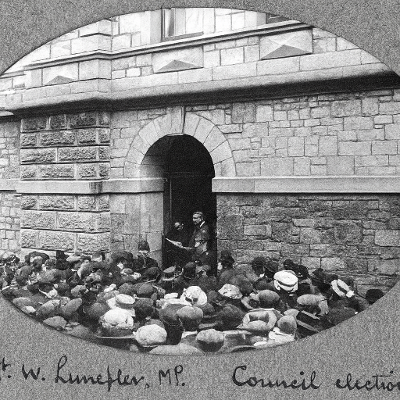
1907
A meeting of the Urban District Council decided that in various areas
of the town the old paving was to be taken up and new concrete laid.
This included North Street and West Street, and from the top of St
Lawrence Lane to the Railway Inn. Cobblestones in the footpaths (which
might relate to Bowden Hill only) were to be replaced by tar paving.
Western Times 11 June 1907 p2 col4
1929 Mr W H Folland's tender for a horse, cart, and man to work with the steam-roller was accepted by the Urban District Council. He was to charge 12s per day.
Exeter and Plymouth Gazette 14 November 1929, p2, col5
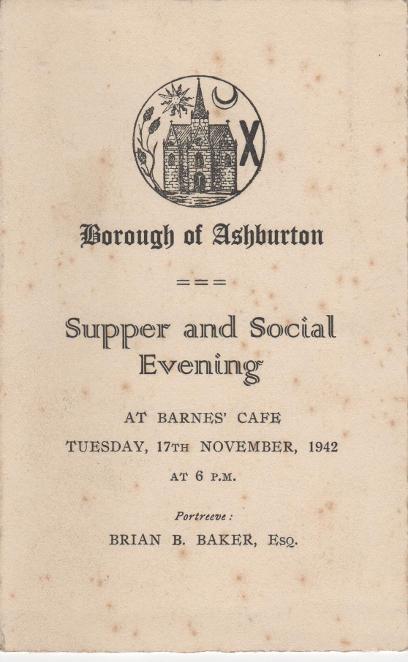
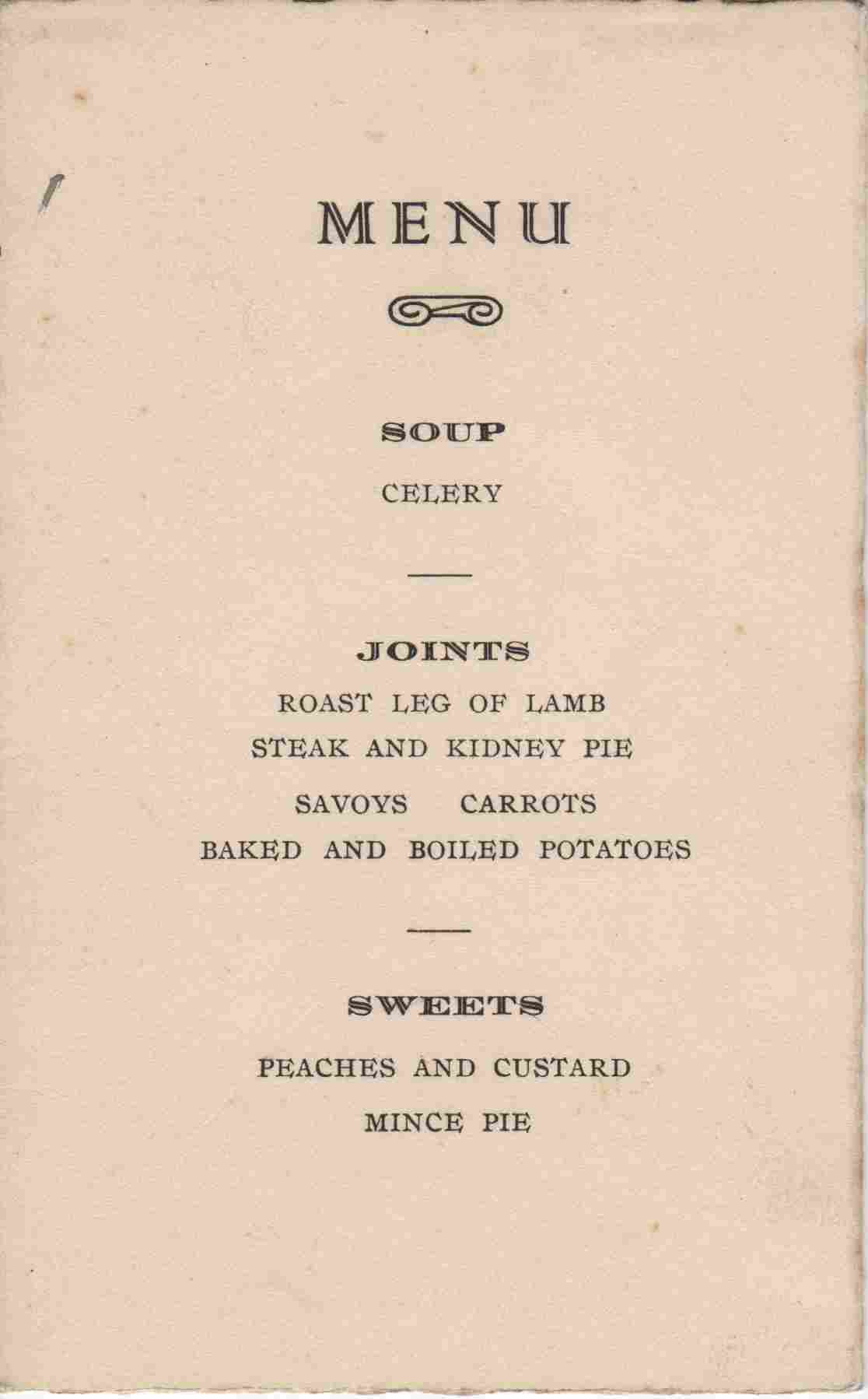
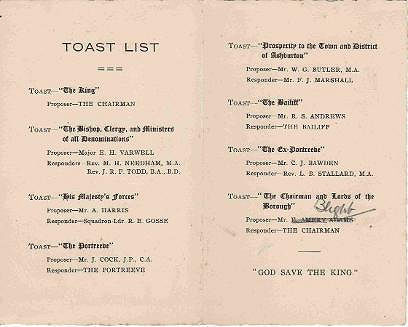
Many thanks to Lerida Arnold for all of these items.
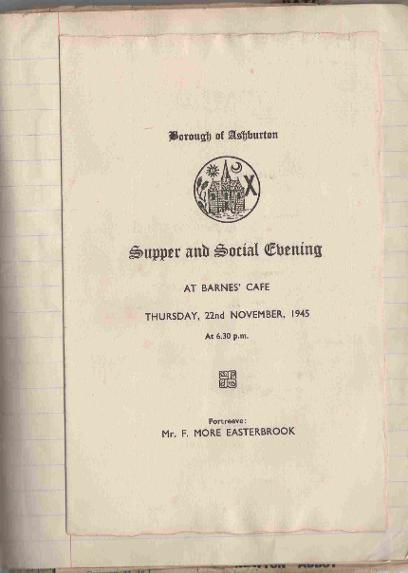
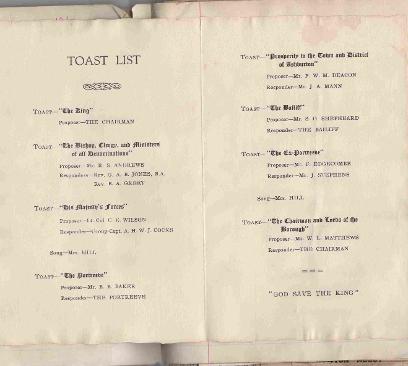
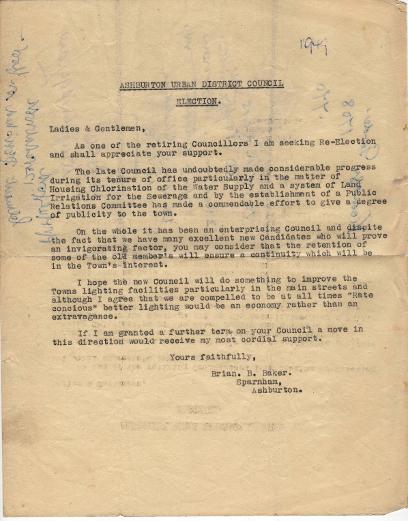
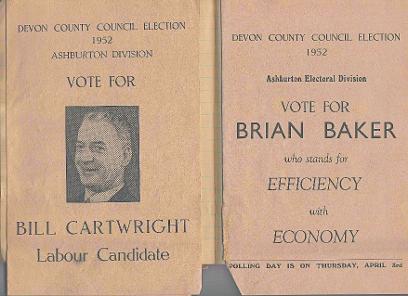
Left: In 1949 Brain Bernard Baker was up for re-election to the Urban District Council.
Above and below: Bill Cartwright and Brain Baker were both candidates in the Devon County Elections in 1952
Many thanks to Lerida Arnold for the above documents.
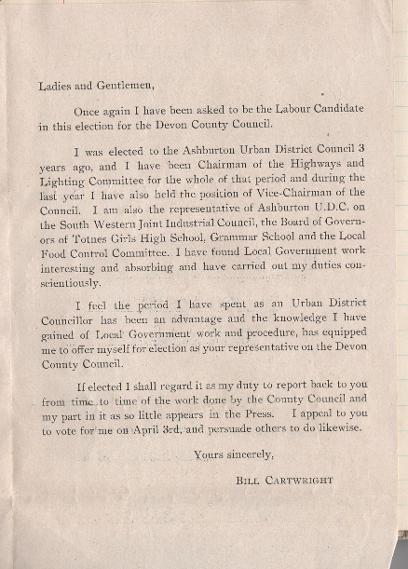
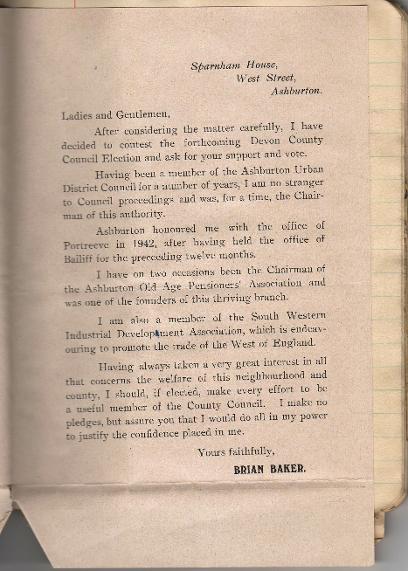
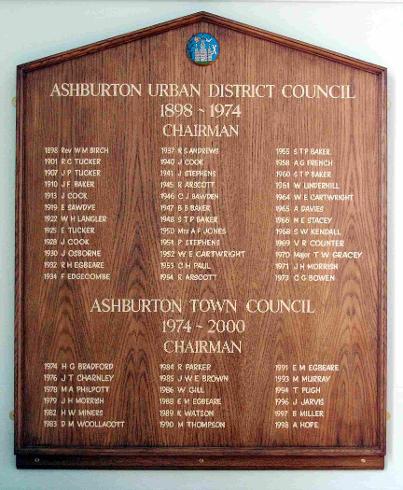
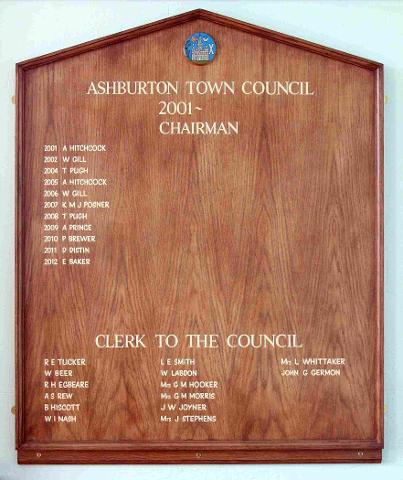
Above: Members of the Town Council, and list of Clerks to the Council. This plaque can be seen in the Town Hall.
Many thanks to John Germon for this photograph.
